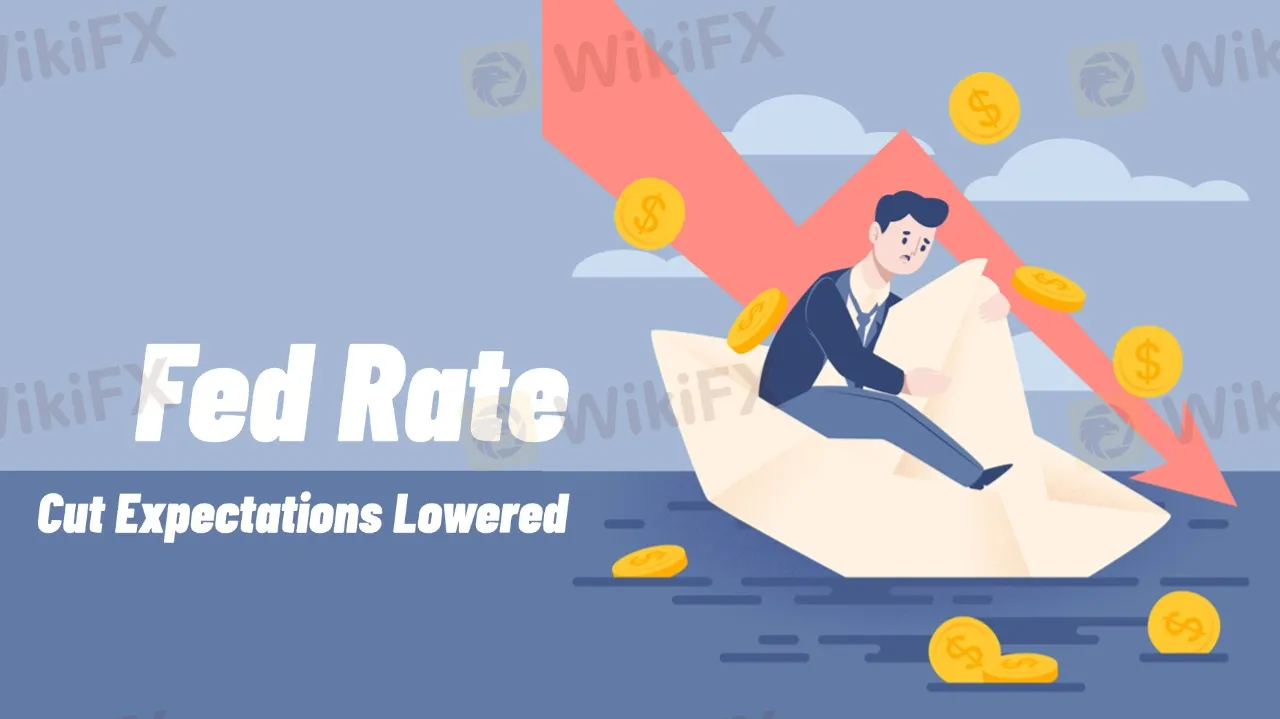简体中文
繁體中文
English
Pусский
日本語
ภาษาไทย
Tiếng Việt
Bahasa Indonesia
Español
हिन्दी
Filippiiniläinen
Français
Deutsch
Português
Türkçe
한국어
العربية
Fed Rate Cut Expectations Lowered
Abstract:Federal Reserve officials have adjusted their rate cut expectations, now anticipating only one rate cut this year instead of the previously expected two.

Persistent inflationary pressures have led to a more cautious policy stance, drawing market attention to its potential impact.
Recently, Federal Reserve officials have signaled a more conservative approach, emphasizing the uncertainty surrounding the disinflation process. Atlanta Fed President Raphael Bostic stated that, considering inflation volatility, he has revised his rate cut forecast from two to one this year.
He pointed out that maintaining stability is preferable to making premature cuts and then having to reverse course, reducing the risk of policy missteps. Additionally, he now expects inflation to return to the 2% target by early 2027, later than previously projected.
The slower-than-expected decline in inflation has made the Fed more cautious in adjusting its policies. Bostic believes that inflation remains at risk of rising, particularly due to external factors that could push prices higher.
Furthermore, the U.S. economic growth rate is expected to slow, leading Bostic to lower his GDP growth forecast for this year to 1.8%, down from the previous 2.1%. The unemployment rate is projected to be between 4.2% and 4.3%, an increase but still within a relatively stable range. Given this economic backdrop, the Fed is taking a more restrained approach to rate cuts to prevent premature policy easing from undermining its inflation control efforts.
How Will the Market React?
The adjustment in rate cut expectations poses challenges to market sentiment, prompting investors to reassess the impact of the interest rate environment on asset prices. While the market had anticipated a more accommodative Fed policy, it must now contend with the possibility of higher interest rates persisting for an extended period.
Moving forward, market trends will depend on inflation data and further signals from the Federal Reserve. Investors should closely monitor economic indicators and adjust their strategies accordingly to navigate potential market fluctuations.

Disclaimer:
The views in this article only represent the author's personal views, and do not constitute investment advice on this platform. This platform does not guarantee the accuracy, completeness and timeliness of the information in the article, and will not be liable for any loss caused by the use of or reliance on the information in the article.
Read more

Webull Launches SMSF Investment Platform with Zero Fees
Webull introduces commission-free SMSF trading, offering over 3,500 US and Australian ETFs, with no brokerage fees and enhanced portfolio tools.

April Fool's Day Scam Prevention Experience Collection
Share your “Forex Fraud Prevention Experience”, win WikiFX points and gold rewards!

How Will the Market React at a Crucial Turning Point?
Safe-haven assets like gold and U.S. Treasuries are surging, while equities face mounting pressure. As this pivotal moment approaches, how will the market react?

Gold Prices Climb Again – Have Investors Seized the Opportunity?
Gold prices have hit record highs for three consecutive days, with a remarkable 19% gain in the first quarter, marking the strongest quarterly performance since 1986. As market risk aversion rises, demand for gold has surged significantly.
WikiFX Broker
Latest News
How Crypto Trading Transforms FX and CFD Brokerage Industry
FCA Warns Against 10 Unlicensed or Clone Firms
CySEC Warns Against 14 Unlicensed Investment Websites
Top Currency Pairs to Watch for Profit This Week - March 31, 2025
Will natural disasters have an impact on the forex market?
Philippines Deports 29 Indonesians Linked to Online Scam Syndicate in Manila
Exposing the Top 5 Scam Brokers of March 2025: A Closer Look by WikiFX
Gold Prices Climb Again – Have Investors Seized the Opportunity?
Webull Launches SMSF Investment Platform with Zero Fees
Australian Regulator Warns of Money Laundering and Fraud Risks in Crypto ATMs
Currency Calculator







